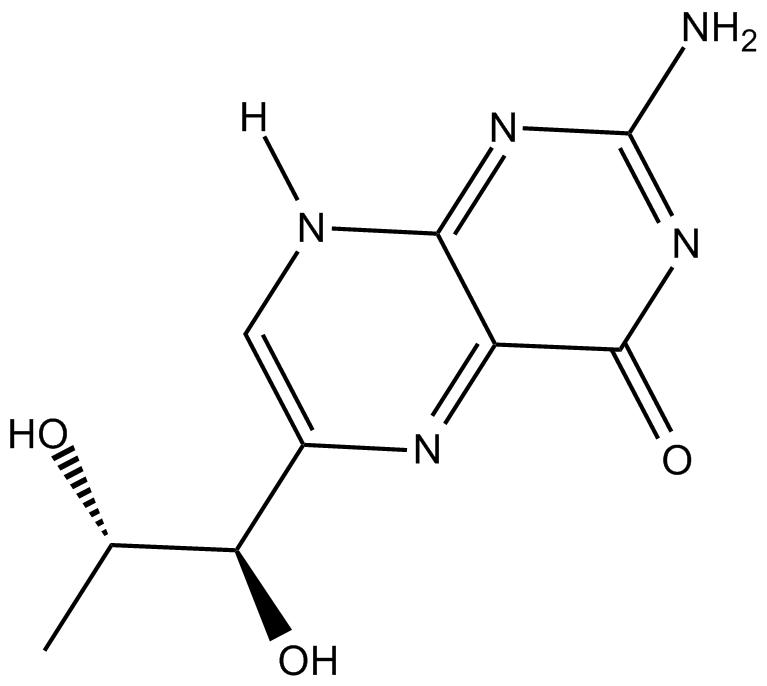L-Biopterin (Synonyms: L-erythro-Biopterin,NSC 339699) |
| Catalog No.GC16200 |
L-Biopterin (L-Biopterin), a pterin derivative, is a NO synthase cofactor.
Products are for research use only. Not for human use. We do not sell to patients.

Cas No.: 22150-76-1
Sample solution is provided at 25 µL, 10mM.
L-Biopterin is the oxidized form of tetrahydrobiopterin (BH4) [1].
Tetrahydrobiopterin (BH4) has been also known as sapropterin. BH4 is an essential cofactor of the three aromatic amino acid hydroxylase enzymes which has used in the degradation of amino acid phenylalanine and in the biosynthesis of the neurotransmitters serotonin (5-HT), melatonin, norepinephrine, dopamine, epinephrine (adrenaline). BH4 is a cofactor of nitric oxide synthases [2].
L-Biopterin was reduced to BH4 via thioredoxin reductase followed by dihydropteridine reductase or reduced glutathione. L-Biopterin was extremely toxic to human melanocytes in culture with the IC50 of 0.2 μM after 48 hrs. L-Biopterin was rarely existed under physiological conditions except in the epidermis of patients with the depigmentation disorder Vitiligo [3].
References:
[1] Schallreuter K U, Buttner G, Pittelkow M R, et al. Cytotoxicity of 6-biopterin to human melanocytes[J]. Biochemical and biophysical research communications, 1994, 204(1): 43-48.
[2] Calka J. The role of nitric oxide in the hypothalamic control of LHRH and oxytocin release, sexual behavior and aging of the LHRH and oxytocin neurons[J]. Folia Histochemica et Cytobiologica, 2006, 44(1): 3.
[3] Moore J, Wood J M, Schallreuter K U. Evidence for Specific Complex Formation between α-Melanocyte Stimulating Hormone and 6 (R)-l-Erythro-5, 6, 7, 8-tetrahydrobiopterin using Near Infrared Fourier Transform Raman Spectroscopy[J]. Biochemistry, 1999, 38(46): 15317-15324.
Average Rating: 5 (Based on Reviews and 7 reference(s) in Google Scholar.)
GLPBIO products are for RESEARCH USE ONLY. Please make sure your review or question is research based.
Required fields are marked with *




















